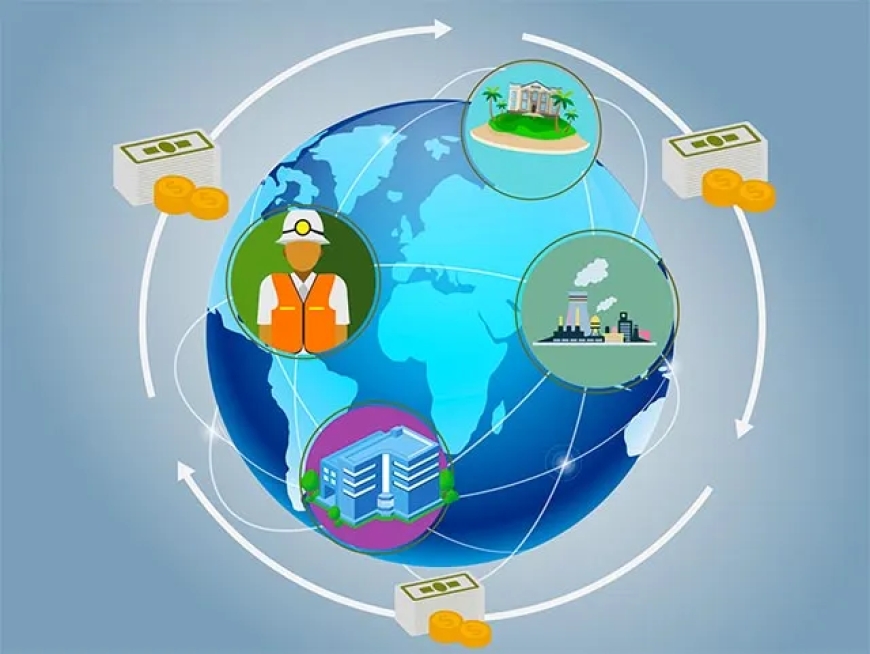Global Economy 2025: Inflation, Supply Chains, and Shipping Woes
The global economy in 2025 faces inflation, supply-chain struggles, and shipping disruptions. Prices are rising, production and logistics are fragile, and maritime trade delays ripple across industries. Businesses and countries must adapt with flexible planning, diversified suppliers, and better logistics to stay resilient in a slower, uneven growth environment.

The global economy's tangled up in 3 core problems that won't quit: stubborn inflation, broken supply chains, and shipping chaos. They're feeding off each other, making everything worse.
Walk into any store, order anything online, talk to any business owner—you'll hear the same story. Prices are up, delivery times are stretched, and there is uncertainty everywhere. What started as pandemic disruptions morphed into something bigger and messier.
This isn't your standard economic slowdown. We've seen recessions before. This is different—simultaneous hits from multiple directions with no clear end date. Supply and demand both broken at the same time. Traditional policy tools barely making a dent.
For businesses, it's exhausting. Plan something in January, conditions flip by March. Lock in suppliers, they can't deliver. Raise prices, customers push back. Don't raise them, margins disappear. Everyone's just trying to stay afloat while figuring out what normal even looks like anymore.
Inflation Won't Back Down
Post-COVID price jumps never really settled. Central banks hiked interest rates hard, thinking that'd cool things off. Didn't work as planned.
What's keeping prices high:
- Supply chains are still broken, so making stuff costs more
- Companies can't find enough workers, wages climb, prices follow
- Energy costs swing wildly month to month
- Everyone now expects higher prices (which weirdly keeps them high)
Supply Chains Are Still Broken
COVID kicked this off in 2020. Geopolitical mess made it worse. The European Central Bank figures we lost 1.4% of global production just from things not moving right.
What's happening:
- Ports backed up everywhere
- Containers stuck in wrong locations
- Ships taking crazy detours
- Companies paying more for inventory or scrambling for expensive backup suppliers
Result? Costs up, delivery times stretched, businesses can't plan properly.
Shipping's a Total Mess
80% of global trade moves by sea. When shipping breaks, everything breaks.

Conflicts near key waterways forced longer routes. Extra fuel, extra days, extra costs. When major routes slow down:
- Factories can't get components
- Stores can't restock
- Prices spike fast
- Trade-dependent countries get hammered
Growth's Crawling
World Bank keeps slashing forecasts. Rich countries barely growing. Developing nations dealing with expensive loans and weak export demand.
Some places managing okay. Others struggling hard. Depends on trade setup, debt levels, and how fast you adapt.
What Companies Are Actually Doing
Single supplier? One shipping route? That's dead.
Smart moves now:
- Multiple suppliers spread across regions
- Bigger inventory buffers (expensive but necessary)
- Backup plans for everything
- Accepting lower short-term profits for stability
Investors: manufacturing with complex supply chains faces rough times. Companies with cash and flexibility will outperform. Interest rates staying high longer than expected.
Governments Stuck Between Bad Options
Central banks picking between lousy choices. Raise rates = kill jobs. Keep low = inflation runs wild.
Wild cards nobody controls:
- Port strikes costing billions daily
- Sea-lane conflicts
- Random geopolitical blowups
Any of these torches a supply chain overnight.
What Actually Has to Happen
Inflation drops gradually as supply problems ease. Won't be quick.

Supply chains need real upgrades: better logistics, backup routes, smarter risk systems. Shipping adjusts to longer routes and tighter regulations.
Countries like India and Vietnam could win here—new trade corridors, reshored factories, less dependence on old hubs. But only with infrastructure and skilled workers ready.
Conclusion
We're not going back to cheap stuff arriving on time. That world's gone.
Risk isn't temporary anymore—it's baked in. Companies building flexibility now survive. Those waiting for "normal" get crushed.
The disruption's permanent. Only question: are you ready or still pretending this blows over?
What's Your Reaction?
 Like
0
Like
0
 Dislike
0
Dislike
0
 Love
0
Love
0
 Funny
0
Funny
0
 Angry
0
Angry
0
 Sad
0
Sad
0
 Wow
0
Wow
0























































































































































































